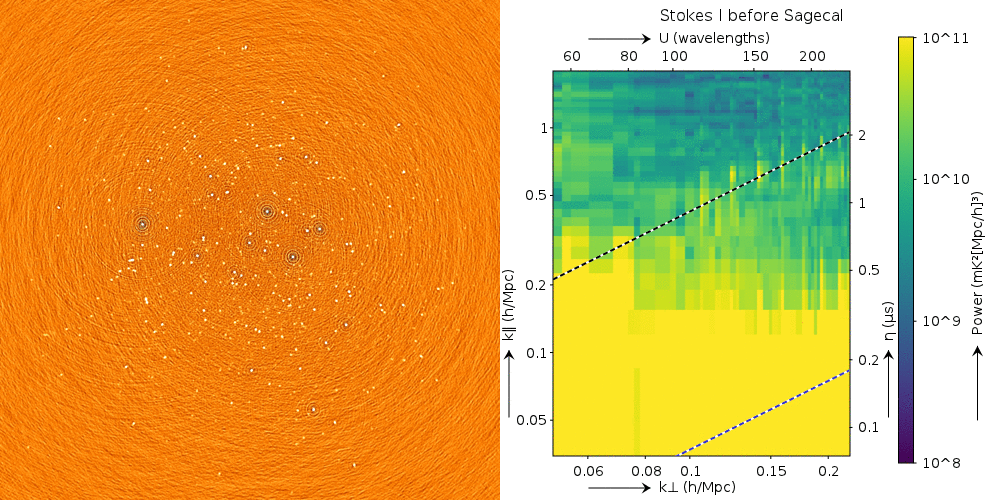Daily Image
14-08-2019Comparing LOFAR Epoch of Reionization target fields using 21-cm power spectra
| Submitter: | Jishnu Nambissan Thekkeppattu |
| Description: | One of the most important epochs in our understanding of the Universe is the Epoch of Reionization (EoR) that is predicted to have happened around 500 million years after the Big Bang. This is the period when hydrogen in the intergalactic medium (IGM) transitioned from being neutral to ionised. The signal from the 21-cm hyperfine transition of neutral hydrogen is the most powerful probe to study this epoch. Since the expected redshift range in which reionization occured is z=10-6, the signals can be detected in the frequency range of 100-200MHz. The cosmological signals are extremely weak and the low-frequency radio sky is dominated by Galactic and extragalactic foregrounds which are orders of magnitude stronger. LOFAR is a powerful radio telescope observing at these frequencies and has the potential to detect these signals. However, LOFAR is most sensitive at the scales at which the foregrounds also dominate. Therefore, it is required to have a deep, high-resolution model for the observing field, which can be used to calibrate the telescope and subtract the sources. For the present analysis we have chosen one of the NCP flanking fields (SAP004), observed using LOFAR high-band (HBA) array between 114MHz to 126MHz. We have generated a deep foreground model consisting of about 10,000 sources using wsclean. There are no strong sources in this field which makes it easier to reach higher sensitivities. Shown is an animation of two images along with their cylindrically-averaged power spectra. One image is before source subtraction and the second one has the sources subtracted after direction-dependent calibration (using sagecal). The majority of sources inside the field of view have been removed and the corresponding power spectra show close to an order of magnitude improvement. Importantly, a large amount of power inside the foreground wedge contributed by foreground sources has been effectively removed by source subtraction. This potentially enables better EoR constraints at the scales at which LOFAR is most sensitive. So far, the field and the deep model look very promising. However, so far we have been using a very simple RFI detection strategy, which does not flag low level RFI in this field and this is currently the major limiting factor. |
| Copyright: | The LOFAR EoR team |
| Tweet |  |
